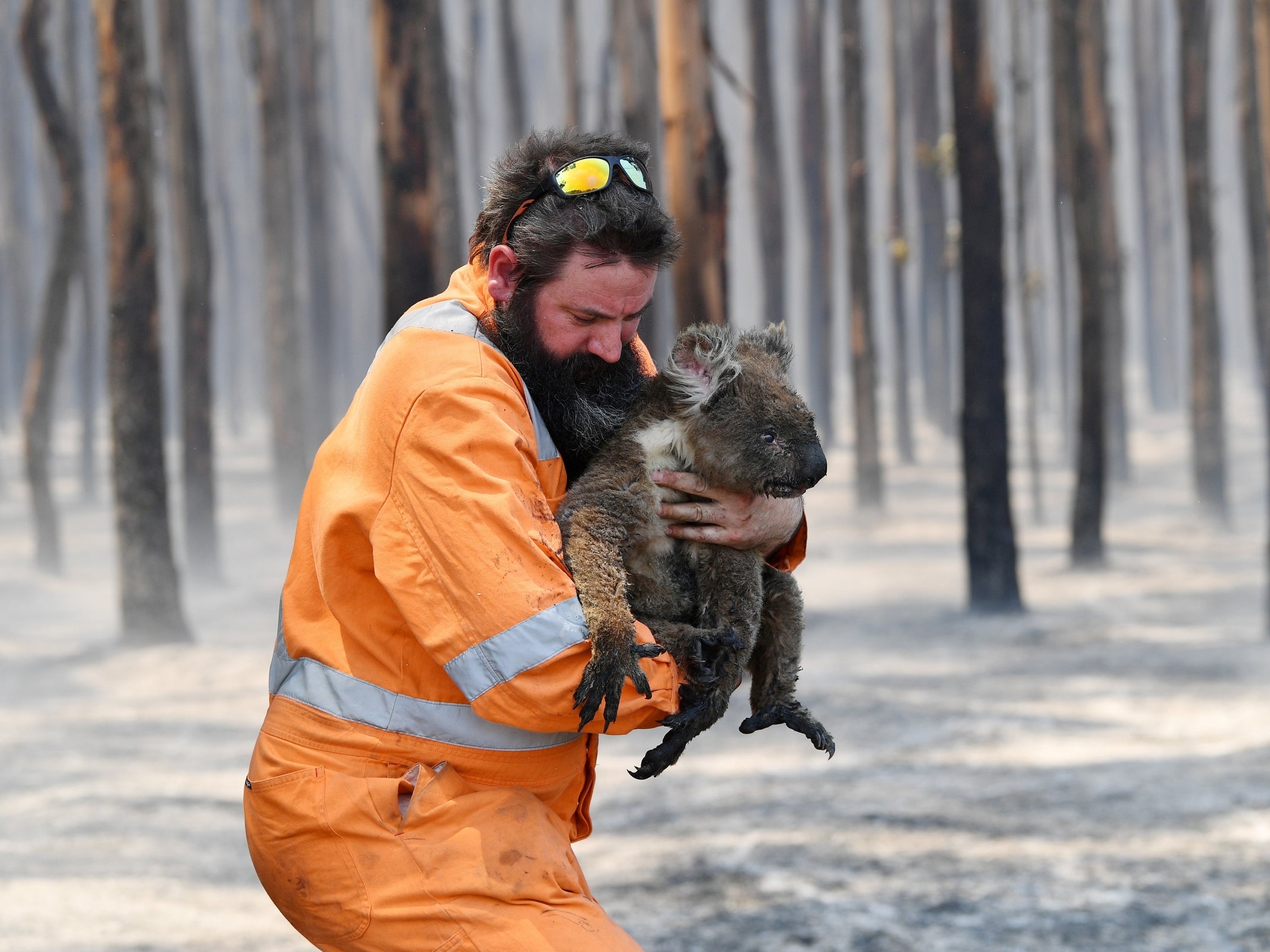Climate crisis: Third of rainforests in New South Wales damaged by Australian bushfires
More than 3.5 million hectares of prime koala habitat has been hit by the record blazes, analysis shows

An Australian government report has revealed that more than 5.4 million acres of bushfires across New South Wales over the last season have impacted over a third of the territory’s unique rainforests – a prime habitat for koalas.
More than 50 per cent of both heathlands and wet sclerophyll forests have also been impacted, a large-scale analysis of the record fires has found.
Amid drought conditions, the east coast territory of New South Wales experienced extensive bushfires peaking in the summer months of December and January 2019-20.
The catastrophic blazes left 34 people dead, while as many as 400 additional deaths have been attributed to smoke inhalation and over 3,000 people attended hospital with exacerbated lung and heart problems.
Ecologists from The University of Sydney estimated more than half a billion mammals, birds, and reptiles were killed in the fires and there remains concerns that entire species of plants and animals may have been wiped out by bushfires.
Six months on, the scientists are just getting to grips with the extent of the impact.
The new report indicates over 3.5 million hectares, or 25 per cent, of the most suitable koala habitat in eastern New South Wales is in the area damaged by the fires. This includes moderate, high and very high suitability habitat. The species is listed as “vulnerable” by the International Union for the Conservation of Nature.
There are 293 threatened animal species or populations known to inhabit the area hit by the fires, with some of the species most at risk including the endangered yellow-bellied glider (a type of gliding possum) for which all the known records are in the overall area affected by the fire, and 55 per cent of which were in the worst hit areas.
Other species at serious risk include the critically endangered long-nosed potoroo – part of the rat-kangaroo family, and the Hastings river mouse.
The picture was similarly bleak for plants. “Of the 6587 plant species with records in New South Wales, 21 have more than 80 per cent of their records within the fire ground and 50 per cent of records within areas where the canopy has been fully affected,” the report said.
The report said the fires “have altered large areas of habitat for species and ecosystems in the State.
“In some places where bushfires were very extensive, there is a scarcity of unburnt areas to provide refuge for wildlife as burnt areas recover.”
The analysis also warned the fire damage and resultant loss of foliage could result in significant amounts of erosion which further degrade the environment, making recovery more difficult.
“The combination of fire and follow-up rains can trigger major erosion events which cause lasting damage to ecosystems,” the report said. “This is because the capacity of landscapes to maintain soil stability changes when vegetation is burnt.”
The scientists assessed the quality of terrestrial habitat at various locations affected by fire, estimating its intactness and naturalness without considering the indirect effects of surrounding habitat loss and fragmentation.
In 2013, 72 per cent of the “original ecological condition” in the areas affected by fire was estimated as remaining in New South Wales. But in 2020, this decreased to 44 per cent, representing a 39 per cent reduction.
This assessment reflects the immediate effects post-fire on vegetation condition. The scientists said the effects of regeneration and regrowth will be captured in future assessments.
Subscribe to Independent Premium to bookmark this article
Want to bookmark your favourite articles and stories to read or reference later? Start your Independent Premium subscription today.

Join our commenting forum
Join thought-provoking conversations, follow other Independent readers and see their replies